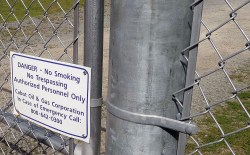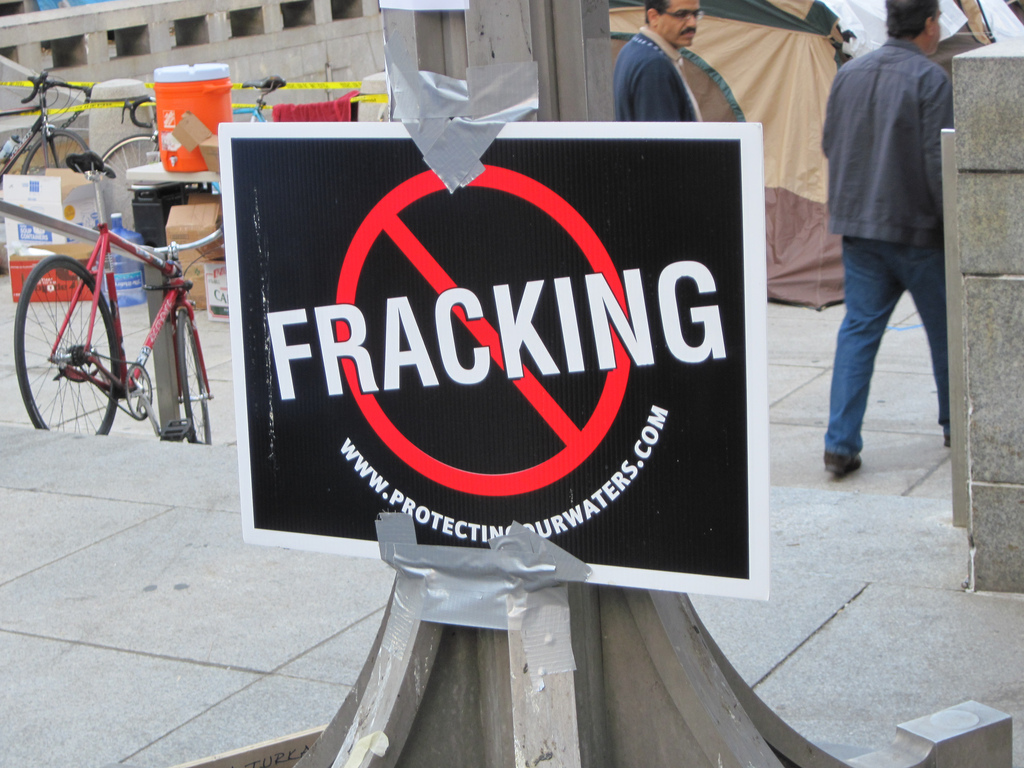
William Avery Hudson
The EPA isn’t looking too hard at what Cabot Oil & Gas Corp. is up to behind this fence, or anywhere else.
The EPA doesn’t seem very interested in finding out whether fracking pollutes groundwater. The latest indication of this emerged over the weekend in the Los Angeles Times.
Residents of the small town of Dimock in northeastern Pennsylvania have long been convinced that Cabot Oil and Gas Corp. was poisoning their drinking water by fracking the land around them. In July of last year, the EPA announced that although water from some local wells contained “naturally occurring” arsenic, barium, and manganese, the agency was ending its investigation there without fingering the any culprits.
Now we find out that staff at a regional EPA office were worried about the role of fracking in polluting the town’s water, but their concerns appear to have been ignored by their bosses.
An internal EPA PowerPoint presentation prepared by regional staffers for their superiors and obtained by the L.A. Times paints an alarming picture of potential links between water contamination and fracking. And it reinforces the perception that the EPA is giving a free pass to the fracking industry, perhaps because natural gas plays a key role in President Obama’s quest for “energy independence” and an “all of the above” energy portfolio. From the L.A. Times article:
The presentation, based on data collected over 4 1/2 years at 11 wells around Dimock, concluded that “methane and other gases released during drilling (including air from the drilling) apparently cause significant damage to the water quality.” The presentation also concluded that “methane is at significantly higher concentrations in the aquifers after gas drilling and perhaps as a result of fracking [hydraulic fracturing] and other gas well work.” …
Robert B. Jackson, professor of environmental sciences at Duke University, who has researched methane contamination in the Dimock area and recently reviewed the presentation, said he was disappointed by the EPA’s decision.
“What’s surprising is to see this data set and then to see EPA walk away from Dimock,” Jackson said. “The issue here is, why wasn’t EPA interested in following up on this to understand it better?”
The EPA confirmed the authenticity of the PowerPoint presentation, but dismissed it as “one [on-scene coordinator’s] thoughts regarding 12 samples” that was never shared publicly because “it was a preliminary evaluation that requires additional assessment.”
The Natural Resources Defense Council puts this latest retreat by the EPA into some context:
Unfortunately, what appears to have happened in Dimock is just the latest in a larger, troubling trend we’re seeing of EPA failing to act on science in controversial fracking cases across the country. Instead, the agency appears to be systematically pulling back from high-profile fracking investigations.
First, in March of 2012—without explanation—EPA abruptly withdrew an emergency order it had issued two years earlier against Range Resources Corporation after the agency found nearby natural gas production operations from the company had likely caused methane and toxic chemical contamination in Parker County, Texas drinking water supplies. … [T]he Associated Press reported that a leaked confidential report proved that EPA had scientific evidence against Range, but changed course after the company threatened not to cooperate with the agency’s ongoing national study of fracking. AP also reported that interviews with the company confirmed this. When asked to explain its actions in light of all of this, EPA’s silence has been deafening.
Then, in late June 2013, EPA made an equally abrupt and unexplained announcement that it was abandoning an investigation into a high-profile drinking water contamination case in Pavillion, Wyoming. …
Now it seems the third shoe drops in Dimock — the latest in what was a triumvirate of highly anticipated federal fracking-related investigations.
Maybe the EPA has forgotten what its middle initial stands for?



